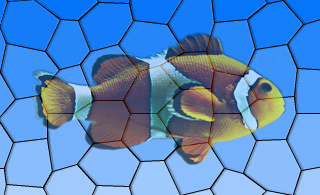PySide6.QtWidgets.QGraphicsOpacityEffect¶
- class QGraphicsOpacityEffect¶
The
QGraphicsOpacityEffectclass provides an opacity effect.Details
An opacity effect renders the source with an opacity. This effect is useful for making the source semi-transparent, similar to a fade-in/fade-out sequence. The opacity can be modified using the
setOpacity()function.By default, the opacity is 0.7.
Synopsis¶
Properties¶
opacityᅟ- The opacity of the effectopacityMaskᅟ- The opacity mask of the effect
Methods¶
def
__init__()def
opacity()def
opacityMask()
Slots¶
def
setOpacity()def
setOpacityMask()
Signals¶
def
opacityChanged()
Note
This documentation may contain snippets that were automatically translated from C++ to Python. We always welcome contributions to the snippet translation. If you see an issue with the translation, you can also let us know by creating a ticket on https:/bugreports.qt.io/projects/PYSIDE
Note
Properties can be used directly when
from __feature__ import true_propertyis used or via accessor functions otherwise.- property opacityᅟ: float¶
This property holds the opacity of the effect..
The value should be in the range of 0.0 to 1.0, where 0.0 is fully transparent and 1.0 is fully opaque.
By default, the opacity is 0.7.
See also
- Access functions:
Warning
This section contains snippets that were automatically translated from C++ to Python and may contain errors.
This property holds the opacity mask of the effect..
An opacity mask allows you apply opacity to portions of an element.
For example:
... alphaGradient = QLinearGradient(rect.topLeft(), rect.bottomLeft()) alphaGradient.setColorAt(0.0, Qt.GlobalColor.transparent) alphaGradient.setColorAt(0.5, Qt.GlobalColor.black) alphaGradient.setColorAt(1.0, Qt.GlobalColor.transparent) effect = QGraphicsOpacityEffect() effect.setOpacityMask(alphaGradient) ...
There is no opacity mask by default.
See also
- Access functions:
Constructs a new
QGraphicsOpacityEffectinstance. Theparentparameter is passed toQGraphicsEffect‘s constructor.- opacity()¶
- Return type:
float
See also
Getter of property
opacityᅟ.- opacityChanged(opacity)¶
- Parameters:
opacity – float
This signal is emitted whenever the effect’s opacity changes. The
opacityparameter holds the effect’s new opacity.Notification signal of property
opacityᅟ.- opacityMask()¶
- Return type:
See also
Getter of property
opacityMaskᅟ.This signal is emitted whenever the effect’s opacity mask changes. The
maskparameter holds the effect’s new opacity mask.Notification signal of property
opacityMaskᅟ.Setter of property
opacityᅟ.Setter of property
opacityMaskᅟ.
